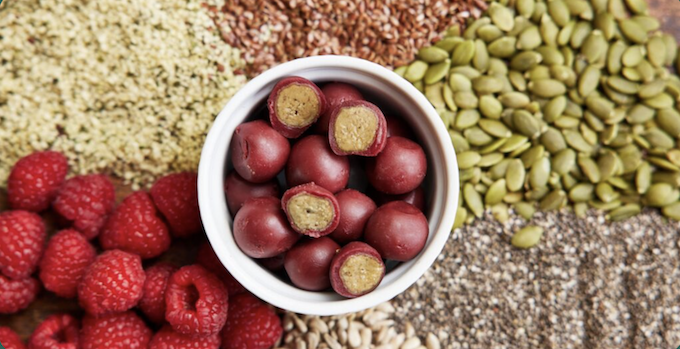
What Flavour Would You Like Your Packaging?
In a world grappling with the environmental impact of plastic waste, several innovative start-ups have set out to transform the way we package and consume our favourite snacks. Brands working on producing edible packaging solutions not only aim to reduce plastic usage but also offer nutritional benefits and flavour innovation.
The food industry is notorious for generating substantial waste, as highlighted by the U.N. Environment Programme, which reports that packaging (including single-use food and beverage containers) accounts for 36% of all plastics manufactured. Unfortunately, approximately 85% of this plastic ends up in landfills or contaminates the environment, leaching harmful toxins and posing a threat to wildlife.
Foodberry, a Boston-based start-up founded in 2012, is taking inspiration from nature’s packaging –fruit skins– to create a range of edible coatings that protect and preserve foods without the need for plastic. CEO Marty Kolewe emphasizes that Foodberry’s coatings mimic the diversity of natural fruit coatings, offering a variety of textures and flavours while ensuring the safety and tastiness of the enclosed snacks. From ice cream to yogurt, hummus, and even cheese, Foodberry’s coatings provide a convenient, on-the-go snacking experience, even for hard-to-transport foods. “There isn’t just a single Foodberry coating — it’s a library of materials, inspired by the same diversity of coatings and structures found in natural fruits, that all have protective and encapsulating functions,” says CEO Marty Kolewe.
What sets Foodberry apart is its commitment to sustainability and nutritional value. By leveraging fruit and vegetable fibres, phytonutrients, and minerals, Foodberry not only creates a protective barrier for food but also enhances its nutritional profile. These coatings are perishable, with a typical lifespan of 60 to 90 days, but frozen items can last over a year, making them suitable for a variety of products.
Partnering with brands like the dairy-free ice cream producer NadaMoo!, Foodberry is already making waves in the market, with its plant-based coatings being used on dairy-free ice cream products sold in over 1,000 locations. Additionally, Foodberry is poised to collaborate with a “yet-to-be-named multibillion-dollar food and beverage brand,” signalling its potential to have a larger impact on the industry.
Meanwhile, London-based packaging company Notpla (which stands for “not plastic”) has also been on the market for a while with its seaweed-based packaging alternatives. Known for its edible “bubble shots,” Notpla’s sustainable packaging substitutes are mainly made from seaweed, which is highly biodegradable and requires minimal resources for cultivation. Notpla’s packaging breaks down in nature within four to six weeks, without the need for specialised composting facilities.
The applications for Notpla’s packaging are vast, ranging from hydration solutions for athletes and concertgoers to various food packaging formats. With its commitment to sustainability and innovation, Notpla is leading the charge in reducing plastic waste and promoting environmentally friendly alternatives.
Microplastics have been found to infiltrate the human body via the food and beverages we consume. Earlier this year, researchers made a concerning discovery: bottled water available in stores contained nearly a quarter million invisible plastic particles derived from seven different types of plastics, with 90% categorised as nanoplastics. Despite being recognised for their potential to disrupt biological systems, the precise impact of these particles on human health remains largely unstudied. However, a study conducted in Italy, which published its results last month, may offer initial evidence regarding the health implications of microplastics. In this study, researchers uncovered fragments of microplastics within plaques removed during surgical procedures from patients with fatty deposits and arterial blockages. Further analysis of the tissue samples revealed elevated levels of inflammatory markers among patients harbouring microplastics within their arterial plaques. All the more reason to turn away from plastic packaging and reach out for alternatives.
As the demand for convenient, on-the-go snacks continues to rise, such start-ups will likely continue to be at the forefront of a sustainable snacking revolution. By harnessing the power of nature and innovative technology, these companies are proving that delicious snacks can also be environment-friendly. The next time you reach for a snack, consider the packaging it comes in –it might just be edible!
REFERENCES
- 1. https://www.thecooldown.com/green-tech/foodberry-edible-food-packaging/
- 2. https://www.sciencealert.com/plastic-found-inside-more-than-50-of-plaques-from-clogged-arteries
- 3. https://www.pbs.org/newshour/science/scientists-find-about-a-quarter-million-invisible-microplastic-particles-in-a-liter-of-bottled-water
